What's New
Displaying results 2391 - 2400 of 4052

Resource | Publications,
This report provides a comprehensive situational overview of low-skilled labour migration and labour migration governance within South-East Asia, alongside a review of the legal, social, and cultural factors affecting the right to health for migrant workers in the region. An overview of the international standards for the right to health, including their specific application to migrant workers, is included as context for this situational overview.
At a global level, the catalyst for this report is the adoption of the World Health Assembly (WHA) Resolution on the Health of Migrants in 2008. Among other things, this resolution calls for the promotion of migrant-sensitive health policies;1 the establishment of health information systems containing disaggregated data to support analysis of migrant health needs; and the documentation and sharing of information and best practices for meeting the health needs of migrants in countries of origin, return, transit, or destination.
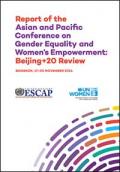
Resource | Publications,
To mark the twentieth anniversary of the Beijing Declaration and Platform for Action, the Economic and Social Council, in its resolution 2013/18, called on all Member States to undertake comprehensive national-level reviews of the progress made and challenges encountered in implementation of the Platform for Action.
In accordance with this mandate, the United Nations Economic and Social Commission for Asia and the Pacific (ESCAP) convened, in cooperation with UN-Women, the "Asian and Pacific Conference on Gender Equality and Women's Empowerment: Beijing+20 Review" from 17 to 20 November 2014 in Bangkok.
Occurring at the juncture between the conclusion of the Millennium Development Goals and the formulation of new global sustainable development goals, the Conference brought together more than 700 representatives from Governments, civil society and development partners from more than 50 countries, to address issues critical to achieving gender equality and women’s empowerment in Asia and the Pacific. These included reducing poverty among women, eliminating violence against women and girls, empowering women economically, increasing their political participation at all levels of government and addressing emerging environmental challenges.
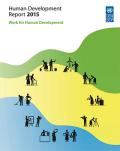
Resource | Publications,
The 2015 Human Development Report is the latest in the series of global Human Development Reports published by the United Nations Development Programme (UNDP) since 1990 as independent, analytically and empirically grounded discussions of major development issues, trends and policies.
This report starts with a fundamental question - how can work enhance human development? The Report takes a broad view of work, going beyond jobs and taking into account such activities as unpaid care work, voluntary work and creative work - all of which contribute to the richness of human lives.
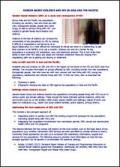
Resource | Publications,
Across Asia and the Pacific, key populations - including sex workers, men who have sex with men, transgender people, people who inject drugs, as well as persons living with HIV - are subject to gender-based discrimination and violence.
Violence or the fear of violence can increase the vulnerability of key populations to HIV by making it difficult or impossible to set the terms of an equal relationship. It is more difficult for individuals to refuse sex when in a relationship, to get their partners to be faithful, or to use a condom. Violence can also be a barrier for key populations in accessing HIV prevention, care, and treatment services. This in turn limits their ability to learn their HIV status and adopt and maintain protective measures ranging from negotiating safer sex to getting and staying on treatment.
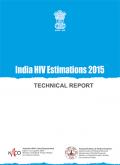
Resource | Publications,
National AIDS Control Organisation (NACO), Ministry of Health and Family Welfare, Government of India periodically undertakes HIV estimations to provide the updated information on the status of HIV epidemic in India. The first HIV estimation in India was done in 1998, while the last round was done in 2012. India HIV Estimates 2015, latest round in the series, provides the current status of the HIV epidemic in the country and the states/ Union Territories (UTs) on key parameters of HIV prevalence, numbers of people living with HIV (PLHIV), new HIV infections, AIDS-related mortality and treatment needs.
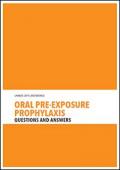
Resource | Tools,
Implementing PrEP poses new challenges in planning, managing and funding combination prevention. Realizing the promise of PrEP will require governments, funders, civil society and other stakeholders to join forces to systematically address them–licensing antiretroviral medicines for PrEP use, setting priorities for locations and populations for implementation, making services user-friendly and ensuring adherence. These efforts are worthwhile based on their contribution to achieving the global targets of less than 500 000 people annually acquiring HIV in 2020 and the end of AIDS as a public health threat by 2030.
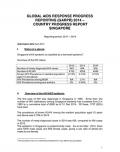
Resource | Publications,
The National AIDS Control Programme focuses on HIV education and prevention for the general population as well as specific at-risk groups, reducing the pool of undiagnosed HIV-infected individuals, and providing care and support to those living with HIV/AIDS. To further enhance the surveillance and control of HIV, MOH set up a National Public Health Unit in September 2008. This unit is responsible for maintaining and enhancing the National HIV Registry, carrying out contact tracing and partner notification for newly-diagnosed HIV patients, and conducting HIV-related public health research.
During the course of 2011 to 2014, national efforts to increase access to HIV prevention, education, testing, care and support have continued.
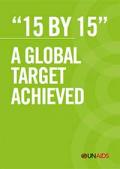
Resource | Publications,
In 2012, the Treatment 2015 initiative was launched, which aimed to redouble efforts to achieve the global target of reaching 15 million people with HIV treatment by 2015. Determined to achieve a highly ambitious global treatment target by the agreed deadline, UNAIDS called for concerted global action to increase the speed of HIV treatment scale-up, enhance the programmatic focus on those most in need, and foster innovation in HIV testing and treatment approaches.
Emerging three years after the launch of Treatment 2015, this report celebrates the world's achievement of this historic milestone, which is saving more lives than ever before. As this report reveals, we have indeed learned how to do better in bringing HIV treatment to those who need it.
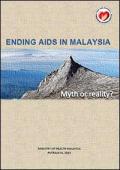
Resource | Publications,
The development of AIDS Epidemic Model for Ending AIDS in Malaysia marks another important milestone in the country’s unswerving commitment in shaping effective and sustainable response to the epidemic. To date, the country has notched many successes through its determined leadership aimed at reversing and halting the epidemic. New HIV infection rate has declined by half, falling from 22 per 100,000 populations in 2000 to 11 per 100,000 populations in 2009. The number of new infections have been stable in the past five years though it edged up in 2010.
Our almost three-decade long response to the HIV epidemic without signs of complacency has enabled us to achieve the MDG 6 target of reducing by half the proportion of new HIV infections. We need to build on these successes and maintain the momentum. The challenge is to sustain the achievement and embark on the fast track strategy to close the book on AIDS epidemic by 2030 or earlier, the first effort of its kind in the country. To achieve this goal, a powerful yet realistic tool such as the AIDS Epidemic Model (AEM) is pivotal.
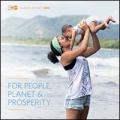
Resource | Publications,
In 2015, UNFPA began analysing how its programmes in 155 countries and territories will be critical to achieving key Sustainable Development Goals and targets and matching objectives of the UNFPA Strategic Plan 2014–2017 with those set forth in the 2030 Agenda. UNFPA also mapped the links between the objectives of the Programme of Action of the International Conference on Population Development and the Sustainable Development Goals and related targets.
An initial review of UNFPA programmes and objectives identified clear links with 12 of the 17 Sustainable Development Goals, especially Goal 3, to ensure healthy lives for all at all ages, Goal 4, to ensure inclusive and equitable education, and Goal 5 to achieve gender equality and empower women and girls. UNFPA programmes that empower women and young people are also critical to achieving Goal 1, to end poverty in all its forms everywhere.





